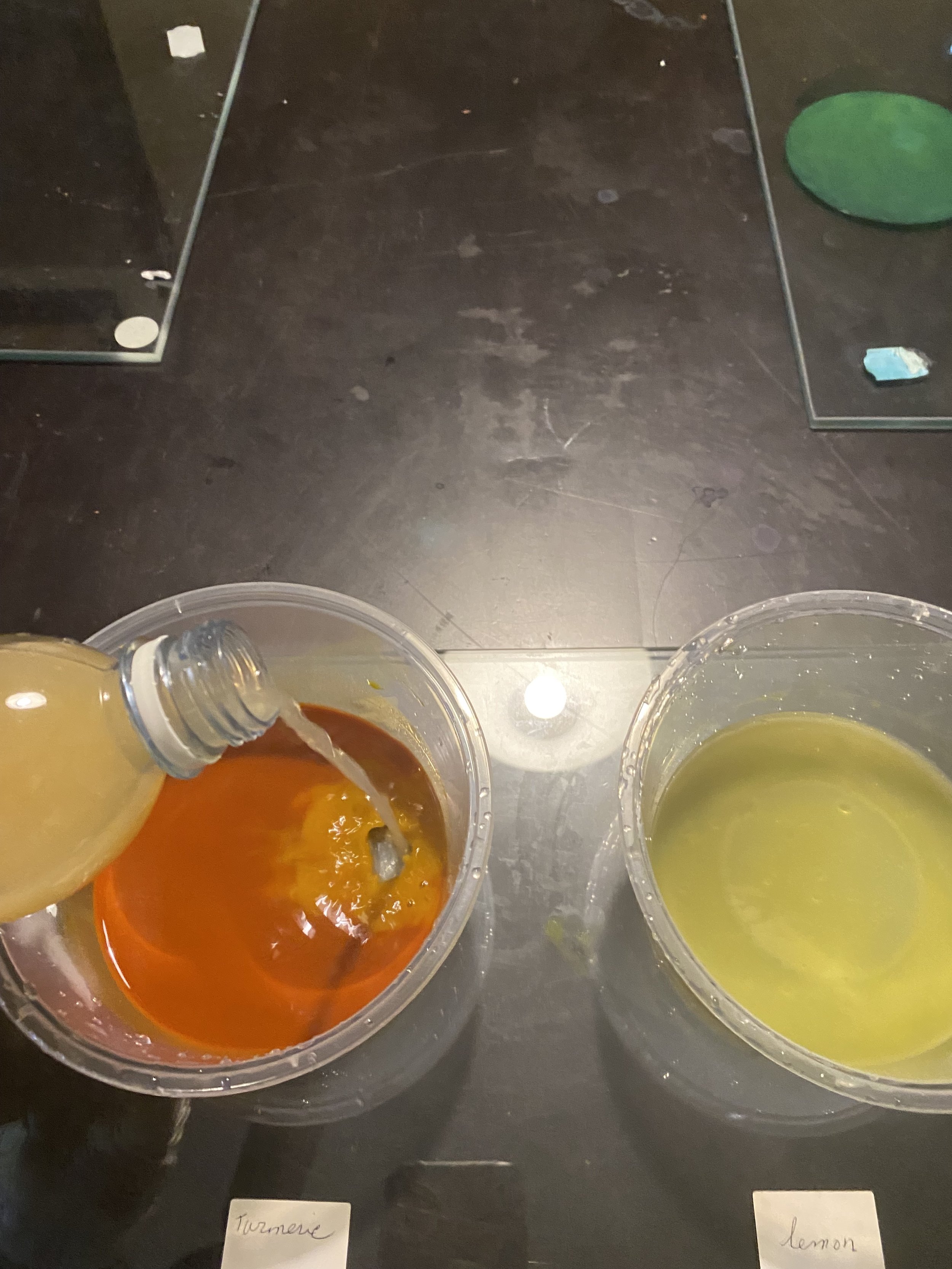PISTACHIO GREEN (BOSTĀQĪ, BOSTOQĪ, FOSTOQĪ)
First Technique:
The first technique is described by Soltān Aḥmad Majnun Rafīqīa Heravīe in Ādāb al-Mašq (Mid 16th century) advising to add yellow into parrot green dye (ṭuṭakī):
گر همره طوطکی شود زرد زان کاغذ بُسْتقی توان کرد
When joined by the parrot's vibrant hue,
Yellow paper emerges, a pistachio view.
Second Technique:
The second technique is described in Resāleh-ye Ḵošnevīsī (1120 A.H./1708 A.D.) and Resāleh Dar Bayān-e Rang Kardan-e Kāğaḏ (19th century), and it is advised to follow the same technique as parrot green dye (ṭuṭakī) to make pistachio-colored paper but using less concentrated indigo. The recipe reads as follows:
نیلش از طوطکی کمتر باشد به طریق طوطکی در زردآب و آب لیمون برد و بشوید و خشک نماید سبز بستاقی اعلا خواهد شد
Take a paper already dyed with indigo, lighter in hue than parrot green (ṭuṭakīk). Dip the light indigo paper in a yellow turmeric solution, similar to how ṭuṭakīk paper is crafted. Retrieve it, immerse it in lemon juice, rinse it with water, and finally, let it dry. This process yields a stunning pistachio (bostāqī) paper.
One may assume that the recipe is suggesting mixing indigo with yellow safflower however, since the recipes are advising to follow the recipes of ṭuṭakīk in the same treatises, it is more convincing that the ingredient for yellow is turmeric.
Third Technique:
The third technique to obtain pistachio green is mentioned in several sources, advising to add saffron to green verdigris to obtain beautiful pistachio green. According to Persian medieval texts, it seems that mixing saffron with verdigris was a common practice among Iranian artists, either as a preventive measure against the destructive effect of verdigris or for obtaining different shades of green color.
Ali Ṣeyrafi poetically refers to it in Golzār-e Ṣafā (950 A.H./1543 A.D) as follows:
ورچو خط لب خود اي جانان فستقي ميل كني بشنو از آن
زعفران داخل زنگار نما پس بدان رنگ كتابت فرما
The smiling green pistachio that resembles your beautiful lips, whispers tenderly,
Mix saffron with zangār and move your pen with it gracefully.
Fourth Technique:
The fourth technique is mentioned in Majmuʿeh al-Ṣanāyeʿ (1005 A.H. /1596 A.D) stating that pistachio green can be obtained from the mixture of saffron and blue vitriol:
رنگ فستقی بآب زاج کبود زعفران برآرند فستقی شود
Adding saffron to a blue vitriol solution yields pistachio green (fostoqī).
Experiment:
The technique of making pistachio green is the same as making parrot green, with the difference that for pistachio green, a lighter shade of blue indigo paper is used compared to parrot green to dip in the turmeric dye bath. Begin by making a light indigo dyebath. Dip the paper into the indigo bath to achieve light indigo paper. Let it dry. Then, take three glass containers—one for making a turmeric dyebath, the second for a lemon juice bath, and the third for plain water. Afterwards, immerse the indigo-dyed paper that you made earlier into the yellow turmeric dyebath using the double dyebath method. Then, take out the paper, dip it in lemon juice, followed by dipping it in water. Finally, let it dry in the shade.








